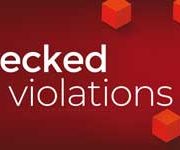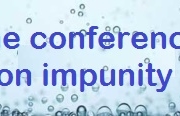Italy. The “minefield” in which journalists work is illuminated by a small episode
Questo articolo è disponibile anche in:
The dismissal of the La Spezia mayor’s lawsuit against the reporter Frosina – The ordeal of unfounded lawsuits – The expurgation from the statistics of these events which represent at least half of the Italian intimidation
OSSIGENO 21st JANUARY 2022 – Ossigeno expressed full solidarity with Paolo Frosina, a journalist from Genoa, an editor with “Il Fatto Quotidiano”, who was dragged by the mayor of La Spezia before the court with a lawsuit for libel that the judge for preliminary investigations dismissed stating that the journalist’s behaviour was legitimate and correct. (Read here)
It was not an open and shut case as it might seem from this brief summary. The journalist had to appoint a defence counsel (and fortunately he had one of the best), the plaintiff opposed the prosecutor’s request for dismissal and so the proceedings were prolonged implicating defence costs and the risk of having to pay damages, without taking into account the personal anguish.
We must be grateful to this journalist for the detailed account of his legal case arising from the publication of one of his articles in which he legitimately criticized the work of the mayor calmly and with factual arguments.
What happened to him lights up like a flash in the dark the scenario in which many Italian journalists move, a scenario already compared elsewhere to a minefield littered not only with intimidation, threats and physical assaults but also with abusive litigation: unfounded libel lawsuits like this one (about ten thousand in Italy every year) and court proceedings for spurious damages (a thousand every year). According to the revelations of Ossigeno in 2021, half of the “mines” on which Italian journalists stumbled were made up of legal threats and abusive litigation. This is the national average, but there have been regions such as Lazio where three out of four intimidations (67%) have been abusive court proceedings.
The statistics of the Documentation Centre of the Italian Ministry of the Interior on threats to Italian journalists do not take into account the case of Paolo Frosina or other similar legal threats and spurious lawsuits. This explains why in 2021 Ossigeno per l’Informazione identified and reported twice the number of threats to Italian journalists compared to that provided by the Interior Ministry’s Documentation Centre (301 compared to 156). Although this oversight is known to all, some observers continue to base their analyses and their comments on the intimidation of Italian journalists exclusively on data from the Interior Ministry. Those media which occasionally report some news on the phenomenon, with few exceptions, do exactly the same. Who benefits from depicting only half of the reality? Analysing a downsized world?
Certainly it does not help journalists such as Paolo Frosina, who work on the front line of the news, who closely follow events as they happen, who continually, whenever someone important is involved in the story, must choose (almost always in absolute solitude) whether in these circumstances the duty to tell readers everything they see with their eyes (as required by the ethical code of journalists and their professional conscience) prevails or is it better to close one’s eyes (wholly or partly), weaken the story, and diminish the significance of the facts; in short, to silence one’s civic conscience for the perfectly reasonable fear of suffering physical, legal, and financial retaliation and avoiding in this way the ordeal that Paolo Frosina experienced, which does not always end in 18 months (on average it lasts from two to six years) nor does it always conclude with a happy ending.
Fortunately, in Italy there are many, many journalists who, faced with this fork in the road between self-censorship and courage, choose the path of courage. But we must try to help them better and more, encourage them to take this path, and reduce the risk that they, themselves, will have to bear all the expenses in human, professional, judicial and financial terms. Because the risk of retaliation is very real; we have many examples and much evidence. The bully on duty is usually stronger than the journalist he targets, especially if the journalist is isolated from and is not fully supported by his professional colleagues and his publisher.
There are many bullies who take advantage of the isolation of the unwelcome journalist, who target only him while maintaining good relations with the newspaper that publishes his articles. These bullies who use legal threats and libel lawsuits like a cudgel are empowered by a law that the sacrosanct politics cannot change, a law that allows one to abuse the right to sue a newspaper and an irritating journalist with impunity even when technically the offence of defamation is committed against reporters who are often weak, poorly paid, without a publisher on their side, and without a newspaper’s lawyer who could provide a legal and financial shield.
It takes the example of a case like this in La Spezia to refresh everyone’s memory, to remind everyone that in Italy these injustices have been happening for decades without the media reporting them systematically (as would be useful), without the government and Parliament finding the courage and the political will necessary to put an end to manifestly unfounded or abusive court proceedings; abuses that have been talked about a lot but are increasingly frequent and unpunished and curtail press freedom. Journalists themselves struggle to find a way to raise their voices, to be heard and to put this little problem on the political agenda.
It is strange that in Italy it is still necessary today to describe a concrete case to explain what really happens in this country. It’s strange but it is necessary. It will be necessary until the media begins to describe with the facts and the essential context of the phenomenon, that among our problems to be solved there is also this small problem of threats to journalists, of which Ossigeno has been describing for ten years the characteristics, nature, size, systematic nature, legislative gaps and non-compliances which make such intimidation a largely unchallenged form of illegal selective censorship.
ASP wt




Leave a Reply
Want to join the discussion?Feel free to contribute!